What are the characteristics of Brazilian coffee, the main producing area of Brazilian coffee?
What are the characteristics of Brazilian coffee as the number one coffee producer in the world? Brazil, as an American bean, has a balanced taste, low acidity and mellow taste, so it is suitable for matching Italian beans. Therefore, the basic mixed beans, fine mixed beans and commercial mixed beans in Qianjie are all based on Brazilian beans.
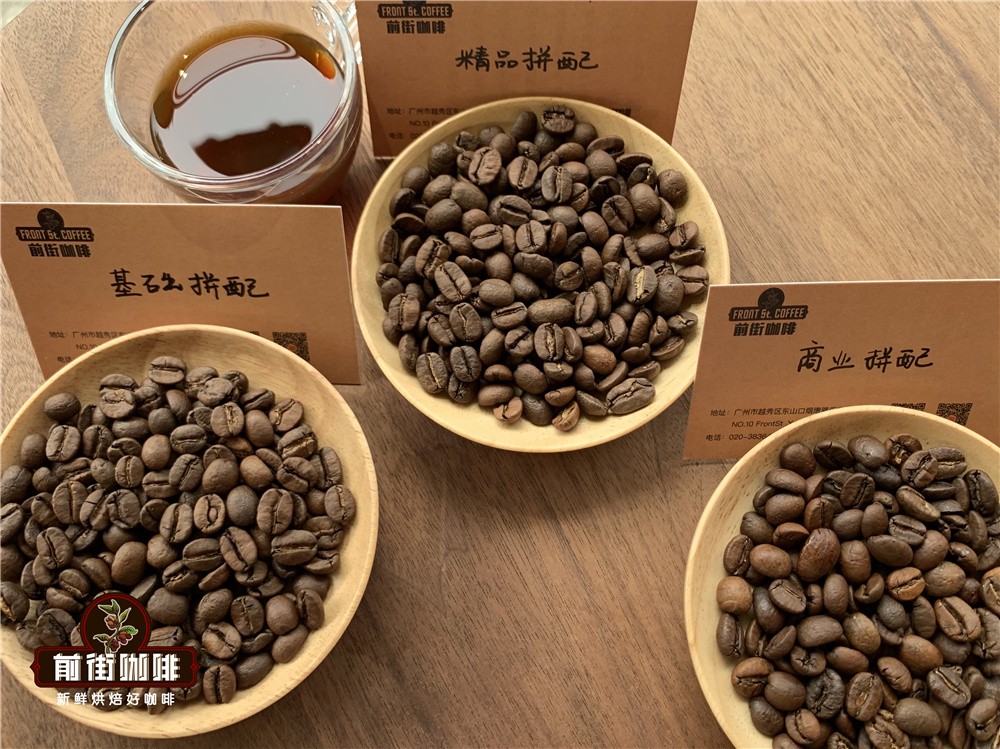
Brazilian coffee is generally grown in flatter areas, although Arabica coffee varieties have to be grown at high altitudes to taste better. But Brazil's low altitude is destined not to grow the coffee flavor of Panamanian Rosa. In order to better adapt to local conditions, Brazilian landowners have developed improved Arabica coffee trees that do not require highland or shade decades ago, which can be planted on plains or grasslands and directly exposed to the sun, which is different from the traditional higher altitude shade cultivation. Low altitude areas also accelerate the ripening rate of coffee fruit, the flavor development is not complete, and the density is not as high as that of high altitude beans. Thanks to the characteristics of the plain, large-scale coffee plantations can be harvested directly and mechanized, saving a lot of manpower.
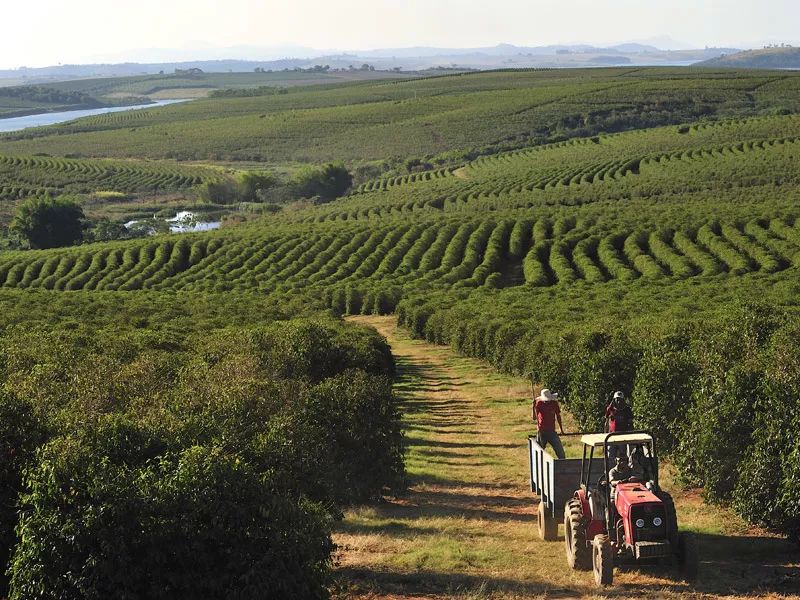
Brazilian coffee beans were introduced from French Guiana (a country in northern South America) in 1720. Brazil was then a colony of Portugal, while many of the other South American countries were colonies of Spain, so most of the countries in South America spoke Spanish, while Brazil spoke Portuguese.
In order to introduce Guyanese coffee beans to Brazil (which was severely prohibited from other countries at the time), Portuguese officers stationed in Brazil captured the heart of the Guyanese governor's wife and succeeded in bringing coffee seeds to Brazil. Since then, coffee has adapted rapidly in Brazil, spreading from the north to the southeastern state of Sao Paulo. By 1845, Brazilian coffee beans accounted for 45% of the world's coffee beans and became the main source of income in the state of Sao Paulo.
Coffee producing areas in Brazil
Brazil is in the tropics, coffee cultivation is dominated by two kinds of topography, one is the Brazilian plateau above 500 meters above sea level, and the other is the Brazilian plain below 200 meters. Brazil has 21 states and 17 states produce coffee, but seven of them produce the most, accounting for 98% of the country's total output. They are: Sao Paulo, Parana, Bahia, Esp í rito Santo, Minas Gerais, Rondo and Rio de Janeiro. The main producing areas of Brazil are Minas Gerais, Sao Paulo, Bahia and Esp í rito Santo, which account for 90% of the country's exports.

Although Brazil is still the largest coffee producer in the world, it no longer has a near monopoly on coffee production as it did in the 1920s. As coffee exports fell, other parts of Brazil (Minas Gerais and Esp í rito Santo) overtook Sao Paulo, and Mochiana Railroad was heavily in debt and was taken over by the government in 1952.
Therefore, there are three main boutique coffee producing areas in Brazil, namely, Mochiana, Syracuse and South Minas.
South Minas Sul de Minas is a hilly woodland of 700m-1200m above sea level, with undulating foothills, rich landforms, obvious dry and wet seasons, large temperature difference between day and night, rich microclimate, suitable for cultivation of bourbon and yellow bourbon, which naturally become the main producing area of boutique coffee. South Minas, the manor that has won the Brazilian extraordinary Cup since 1999, South Minas has the largest number.
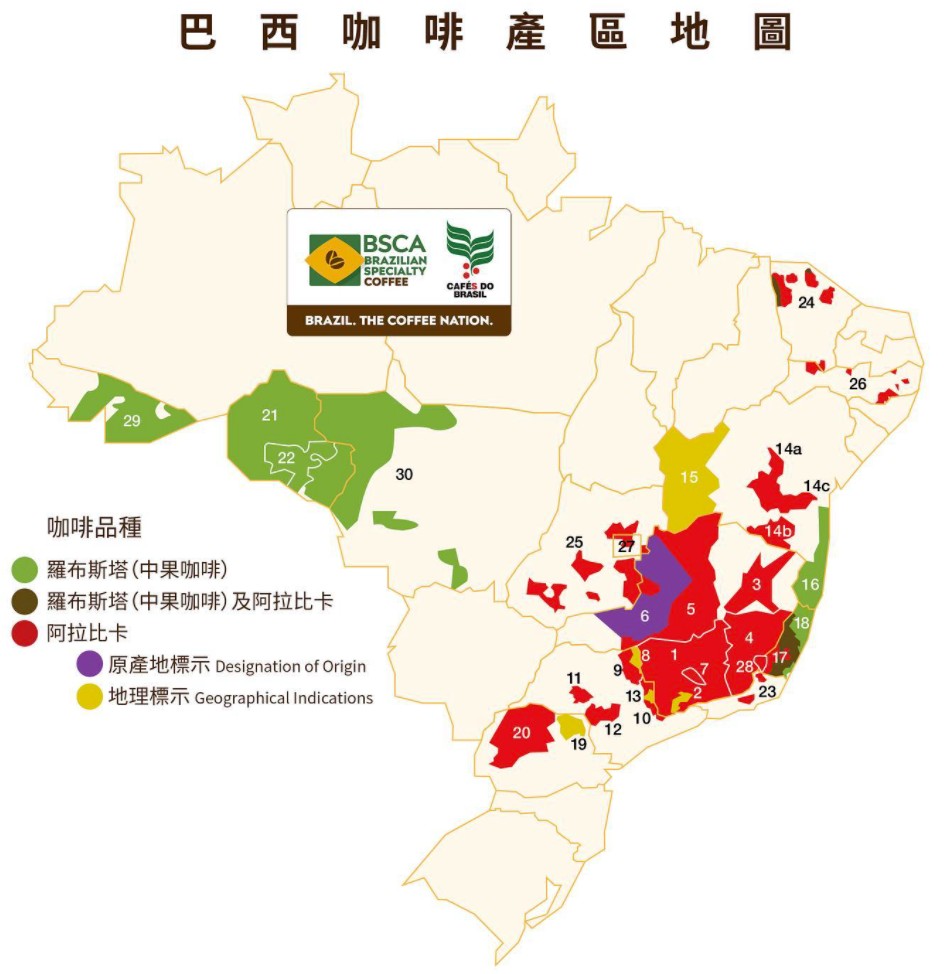
Minas Gerais produces nearly half of the country's annual coffee beans and includes four large producing areas: Cerrado, Sul de Minas, Chapada de Minas and Matas de Minas. The Cerrado Hilado producing area, which has the same name as the Hilado Prairie, especially refers to the Cerrado area in the western part of Minas Gerais. The flat terrain and the concentration of the harvest season are very suitable for large-scale management of harvesting. Many exporters invest in coffee farms here, covering an area of almost more than 10 hectares. Due to the undulating terrain and steep hills, the other three producing areas are mainly manual production in the mode of small farmers. Minas Gerais southeast mountain forest, more than 1000 meters above sea level, also produces high-quality coffee beans. As for other parts of Minas Gerais, such as the north-central region, most of them produce commercial beans.
Syrador
The representative coffee producing areas of Minas Gerais are Syrador and South Minas, both of which are at higher elevations. Hirado is located in the west of Minas Gerais, a flat plateau at 750m-1200m above sea level. Hirado Cerrado region: Hirado is a prairie with the most diverse species in the world. But when it comes to the coffee-producing areas of Hilado, not all the coffee grown on the prairie is called Syrador Coffee. The only coffee that can be crowned with Syrador Coffee is at an altitude of 1100-1300m, where there is the essence of the Hirado Prairie, with high elevation and fertile soil. Qianjie thinks that the coffee beans produced in this area are sweet, mellow and fishy. Because of this, Qianjie chose the coffee from Brazil's Hillado region as the representative of Brazilian coffee.
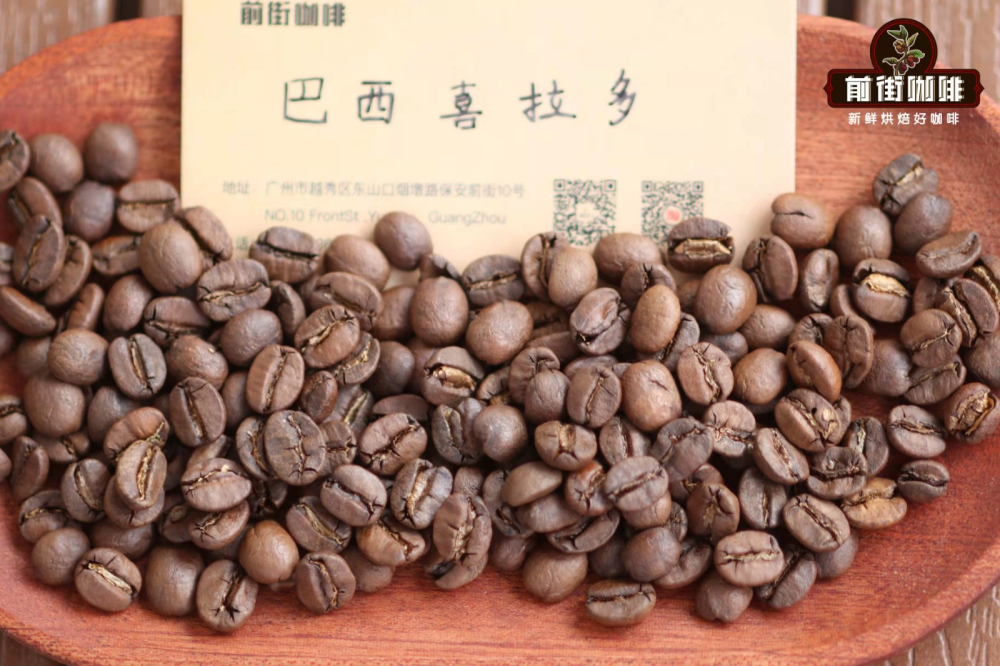
Sao Paulo
The state of Sao Paulo covers Mogiana, Brazil's better-known coffee producing area, named after Mogiana Railroad Company, the company that established the Coffee Railway in 1883. It has also led to the emergence of better modes of transportation, where coffee production has further expanded. Mojiana production area is 900-1100 meters above sea level, the annual average temperature is about 20 ℃, with similar hilly terrain, so that the coffee has a good sense of sweetness and balance, due to the topography of the manor production is mainly manual harvest. The Queen's Manor coffee on the front street bean list is made from Morgiana, sweet and clean, well-balanced and tropical fruit aroma.
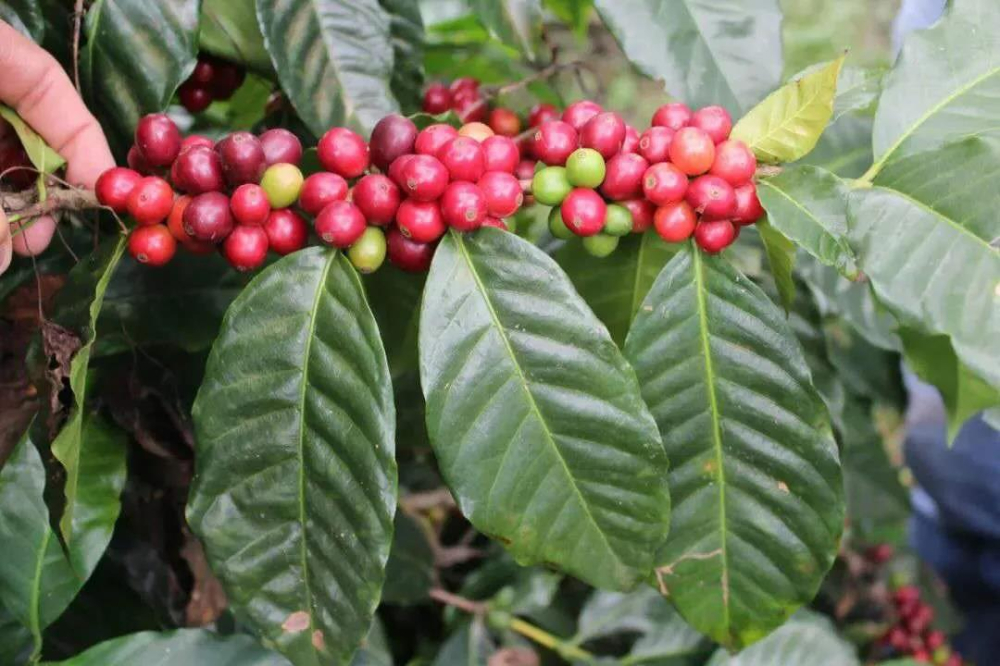
There are several coffee producing areas that we are familiar with in the state of Sao Paulo, mainly represented by Santos and Mochiana. When construction of the Mochiana railway began in 1872, coffee production in S ã o Paulo was less than 20% of that in Brazil. By 1890, thanks to the opening of railways, coffee beans produced in S ã o Paulo could be transported, accounting for 50% of all coffee produced in Brazil. By 1920, Brazil's coffee production had reached 80% of the world's coffee production, half of which came from Sao Paulo.
Morgiana.
The area of Morgiana Mogiana is very close to the south of Minas. Coffee is grown between shrubs, grasslands and other vegetation. There are many farming families in this area, some of which operate in the traditional way of large farms, while others operate in a small-scale and modern way. Modern science and technology mixed with mountain coffee cultivation culture has created the highest quality raw coffee beans. Through the cup test in Qianjie, it is found that the coffee beans produced in this area are as sweet as sugar. The Brazilian Queen Manor Coffee of Front Street Coffee is from the Morgiana producing area.
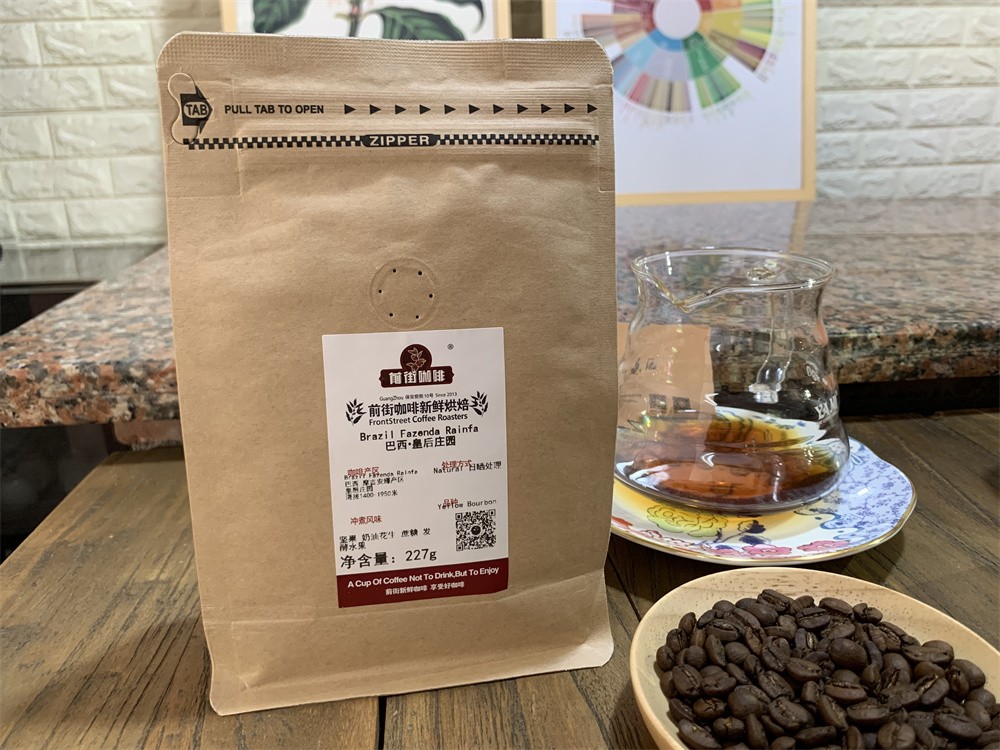
Grading of Brazilian coffee beans
Brazil is relatively low in altitude among many coffee-growing countries in Central and South America, so Brazil does not emphasize hard beans that can only be grown at high elevations, as in other countries such as Colombia. Instead, coffee beans are graded according to particle size, defect rate, cup score and flavor.
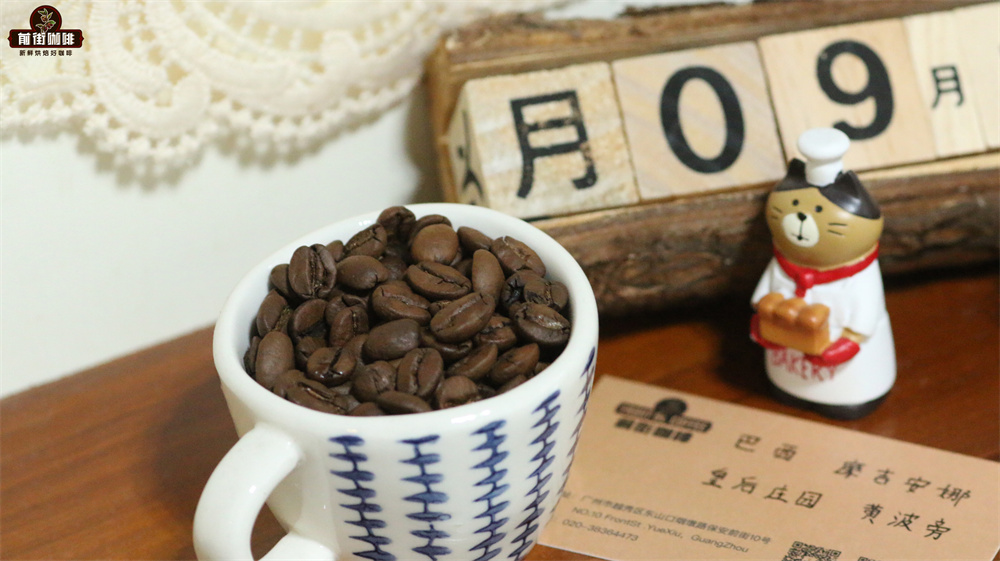
Due to the large output of coffee and the different quality of coffee beans, the local quality inspection authorities will take 300 grams of samples and grade them according to different criteria for defects, size and cup test of raw beans, which is also a unique grading system in Brazil which is different from other producing countries. The raw bean sacks of Brazilian coffee are generally marked with relevant grade information: country + defective grade + cup taste + size + flavor + region, such as Brazil NY.2 SC-17 FC Cerrado 18 FC Cerrado, which refers to the Hilado region of Brazil, with a size of 17-18 mesh, SC stands for Strictly Soft, and the taste is very supple. FC stands for Fine Cup, cup test for high quality, and defect rate grade is NY.2.
Defect classification: NY.2 refers to the New York classification standard, according to the proportion of defects can be divided into NY2, NY2/3, NY3, NY3/4 … The smaller the number is, the lower the defect rate is, the higher the grade is, and the batches with deductions of less than 4 points belong to NY2, that is, the highest level. Since NY.1 refers to the absence of a single defective bean, such selected batches will not be in stable supply, so Brazil has set NY.2 as the highest level.
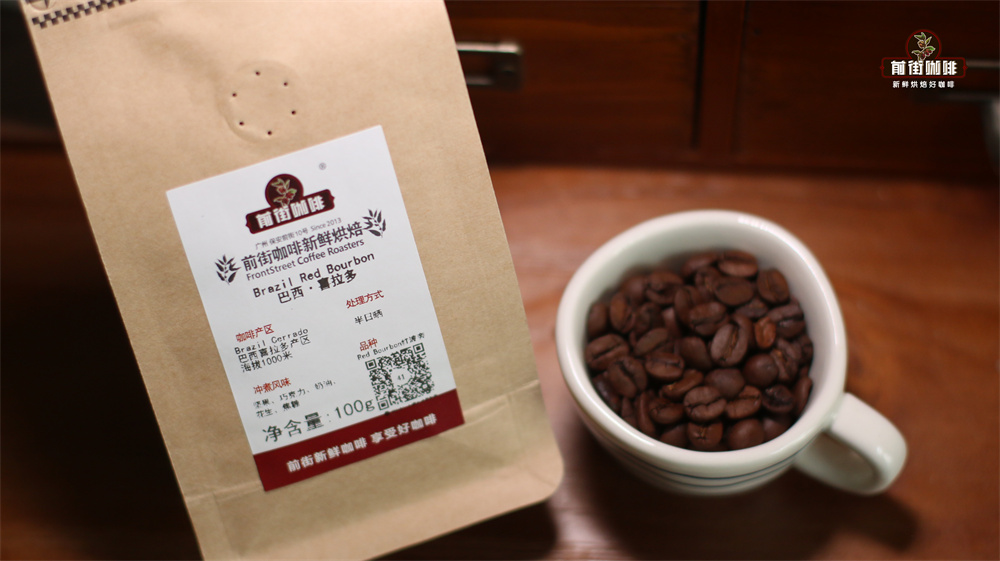
There will also be a standard distinction between flavor and taste, and there will be many different descriptions of the taste of coffee according to cup measurement: Strictly Soft, Soft,Softish, Hard, Rioy. SC is Strictly Soft (very supple) with the best taste. The cup flavor can be divided into Fine Cup, Good cup, Fair cup, Poor cup and Bad cup, while Fine Cup has the best flavor and the highest quality, followed by Good cup.
Brazilian coffee bean varieties
Coffee beans grown in Brazil include Arabica coffee beans and Robusta coffee beans, of which Arabica boutique coffee beans are mainly grown in the states of Sao Paulo and Minas Gerais. Robusta coffee beans are mainly distributed in Espiritu Santo, Bahia, Langdonia and other states.
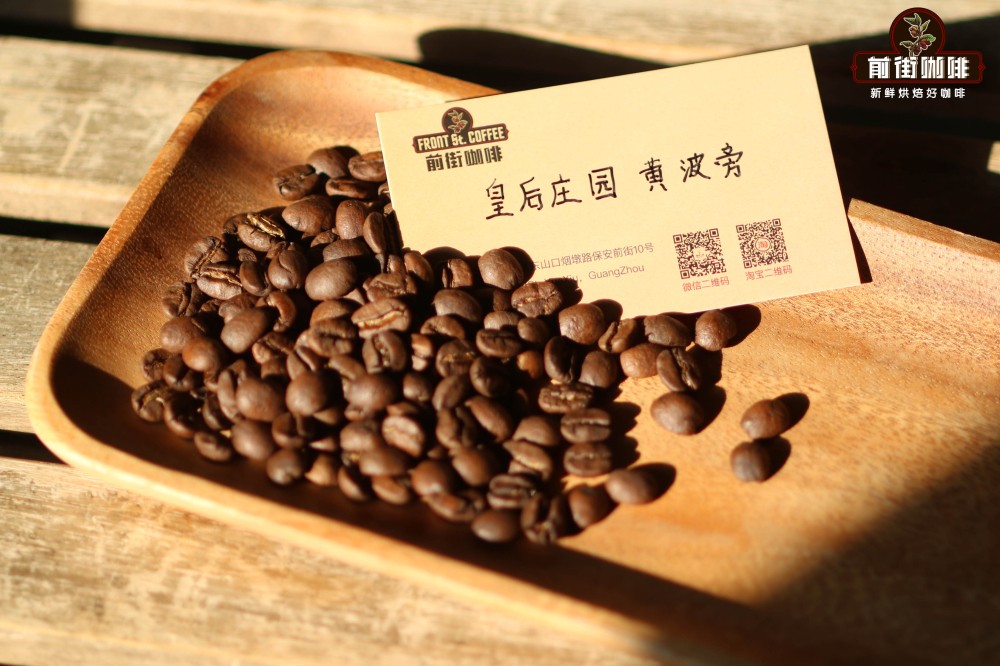
There are many varieties of coffee in Brazil, with red bourbon, yellow bourbon, New World and Kaduai as the main varieties. Bourbon is the oldest local variety. Bourbon varieties have short, round fruit, high density of coffee beans, high sweetness and bright sour taste of bourbon grown at high altitude. It is also an ancient and excellent variety with Tibica. Bourbon has better resistance to rust leaf disease than Tibica, and its flavor does not lose Tibica. The most common thing between bourbon and Tibica is that there must be shade trees to block the sun, which is conducive to growth and flavor development, so there are certain requirements for the growth environment.
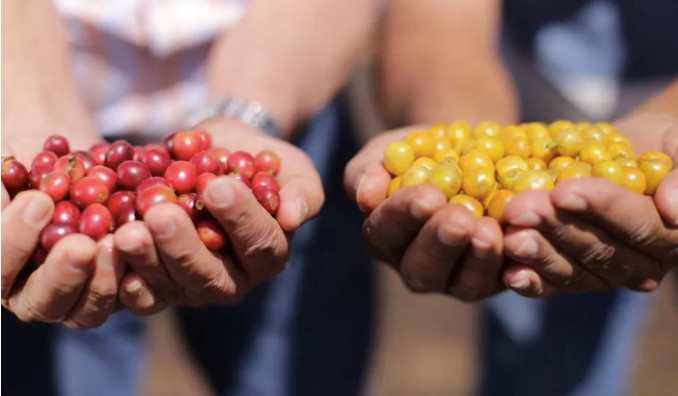
Bourbon coffee variety is the second species caused by the mutation of Tippica coffee variety. Generally speaking, when it comes to bourbon coffee varieties, it will default to red bourbon coffee varieties, because its mature color is red. Yellow bourbon does not refer to the immature state of red bourbon, but the cross between bourbon and the variety of iron pickup with yellow fruit, the ripening consequence is yellow, and it has not been widely planted because of its low yield and relatively intolerant to wind and rain.
From flowering to fruiting, the common bourbon gradually changes from green to yellowish, red, and finally to a fully mature crimson, so it is called red bourbon. In addition, there are bourbon varieties that do not turn red after maturity, which turn into the more rare yellow or pink, that is, yellow bourbon and pink bourbon. The yellow bourbon produced at high altitude, with its exquisite flavor, once won the top place in the CoE Excellence Cup in Brazil. The Queen's Manor coffee on the front street is chosen from Huang bourbon coffee.
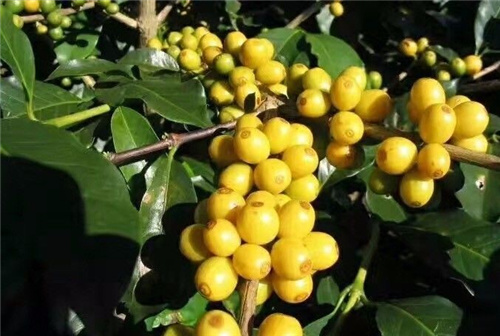
Kaduai is a hybrid of Brazilian yellowskin Kadura and New World in 1950. It is a dwarf coffee tree. It can adapt well at various elevations. When planted above 800m, the flavor will be more excellent. There are two types of red and yellow.
New World is a natural hybrid of bourbon and Sumatra found in Brazil and was planted in Brazil around 1950. Strong environmental adaptability and resistance to diseases and insect pests, although it is a high-yield variety, but the growth rate is slow, and the bean grain is too large. The tree height of more than 3 meters is its disadvantage (this height has exceeded the height of the harvester, so it is not suitable for mechanized harvesting), the top branches and leaves of the coffee tree should be trimmed every year. The new world has a good balance of sour and bitter taste.
Brazilian coffee bean treatment
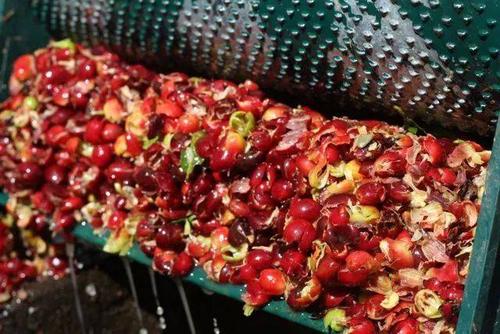
Brazilian half-sun treatment is also called peeling and tanning. Unlike traditional sun treatment, half-sun removes the skin and flesh of coffee berries and can control the fermentation degree of pectin coffee beans after peeling and peeling. The traditional sun is the sun with peel and pulp, so the fermentation degree of pectin can not be seen. The half-sun treatment is between the sun treatment and the water washing treatment, but there is no "pool fermentation and water washing" process of the water washing treatment, but it is directly exposed to the sun. Although the method seems to be similar, without the step of fermentation, the flavor of coffee beans is completely different.
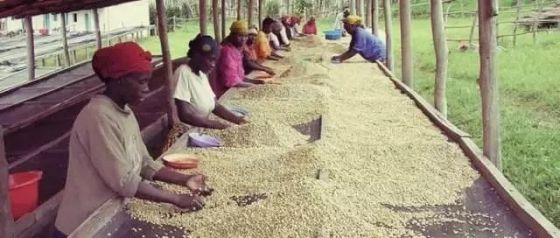
High-quality Brazilian coffee beans have the characteristics of low acid and high alcohol, roasted with nuts, cocoa, chocolate and toast, smooth taste, balanced and clean. Therefore, it is often used in the formula of Italian beans to support the role of neutralization. There are four types of espresso beans on the Qianjie bean list, three of which are based on Brazilian coffee (Qianjie boutique coffee, Qianjie basic coffee, Qianjie commercial coffee). Let the extracted espresso with rich golden oil and rich aromas of roasted hazelnuts. The American coffee is mellow and mellow, and the latte made by blending with milk is as creamy and smooth.
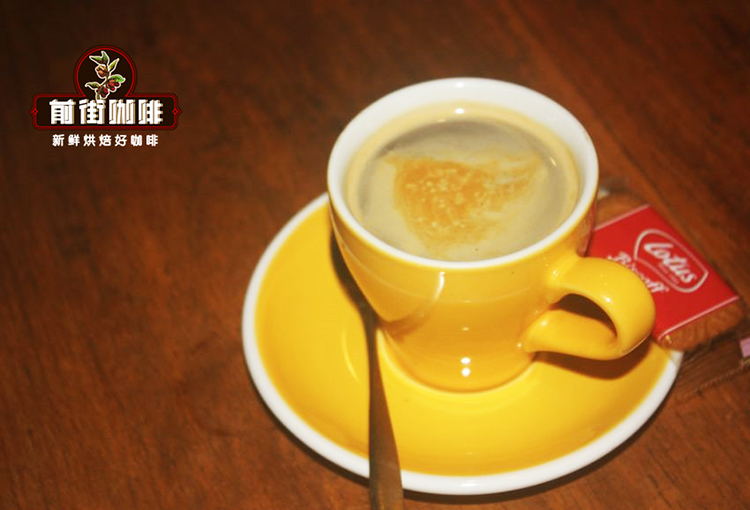
Parameters for brewing Brazilian coffee in Qianjie:
In order to show the balanced and mellow flavor of Brazilian coffee, Qianjie Coffee recommends trickling extraction (hand brewed coffee). Qianjie store product parameters: use Kono filter cup water temperature: 88 ℃ powder quantity: 15g powder water ratio: 1:15 powder water ratio grinding: medium fine grinding (Chinese standard No. 20 sieve pass rate 75%)
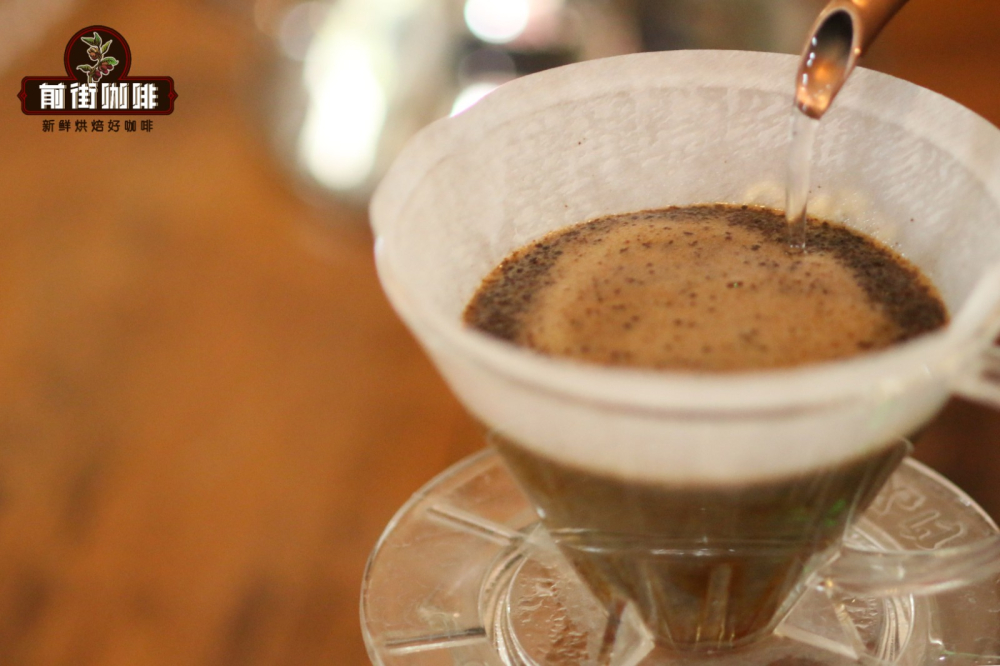
Qianjie Brazilian Hilado coffee flavor features: nuts, caramel, peanuts, supple, low acidity, chocolate flavor.
The flavor characteristics of Brazilian Queen Coffee in the front street: light lemon aroma, rich nutty flavor, obvious dark chocolate flavor in the back, more round overall feeling, cleaner than Brazilian Syrah coffee.

Suggestions for making coffee in front of the street:
No matter what kind of coffee it is, you still need to pay attention to the freshness of coffee beans in order to brew a good cup of coffee. Qianjie has always believed that the freshness of coffee beans has a great relationship with the flavor of coffee, so the coffee beans shipped in Qianjie coffee are roasted within 5 days. The purpose of Qianjie roasting is "freshly roasted coffee", so that every guest who places an order is the freshest coffee when he receives it. The bean cultivation period of coffee is about 4-7 days, so when the guest gets it, it is the time when the flavor is the best.
For those who need to be ground, Qianjie warmly reminds you that if the coffee beans are ground in advance, there is no need to raise the beans, because in the process of transportation, the pressure caused by carbon dioxide in the package can also make the coffee flavor round. so you can drink a cup of coffee as soon as you receive the coffee powder. But the coffee powder needs to be brewed in time, because the coffee powder oxidizes more quickly after contact with the air, that is to say, the flavor of the coffee will dissipate more quickly, and the flavor of the coffee is not so good. Therefore, Qianjie suggests buying whole beans, grinding and flushing now, so that we can better taste the flavor of coffee.
Professional coffee knowledge exchange more coffee bean information please follow the coffee workshop (Wechat official account cafe_style)
For more boutique coffee beans, please add private Qianjie coffee on Wechat. WeChat account: qjcoffeex
Important Notice :
前街咖啡 FrontStreet Coffee has moved to new addredd:
FrontStreet Coffee Address: 315,Donghua East Road,GuangZhou
Tel:020 38364473
- Prev
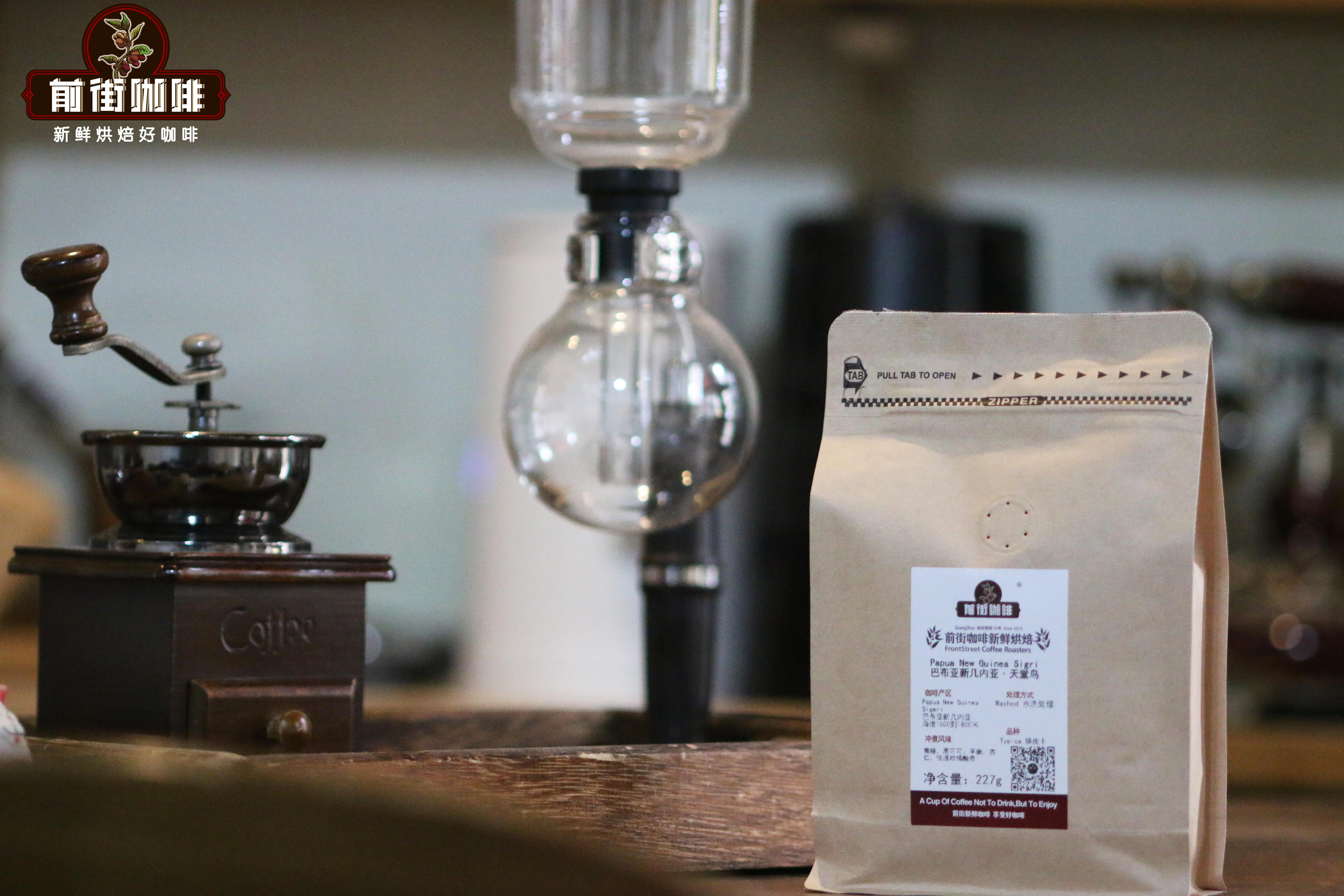
A brief introduction to Papua New Guinea Coffee. What are the flavor characteristics of Paradise Bird Coffee beans?
Located in the tropics, Papua New Guinea has a humid and rainy climate, a detached and primitive natural environment, and a vast and fertile land. Its unique volcanic rock soil and abundant rainfall create excellent natural conditions for the growth of coffee. Papua New Guinea's top coffee beans are like the country's national bird, Paradise Bird.
- Next

Introduction to the information of Columbia's Linglong producing area.
Colombia is currently the third largest coffee producer in the world, after Brazil and Vietnam. It first planted commercial beans in the 1830s. In the 20th century, coffee accounted for the largest number of exported crops. The mountainous terrain, coupled with a variety of tropical microclimate, provides an ideal planting environment. 75% of the total output is sold abroad, making it the most important source of foreign exchange earnings. Traditionally ripe coffee cherries are
Related
- Detailed explanation of Jadeite planting Land in Panamanian Jadeite Manor introduction to the grading system of Jadeite competitive bidding, Red bid, Green bid and Rose Summer
- Story of Coffee planting in Brenka region of Costa Rica Stonehenge Manor anaerobic heavy honey treatment of flavor mouth
- What's on the barrel of Blue Mountain Coffee beans?
- Can American coffee also pull flowers? How to use hot American style to pull out a good-looking pattern?
- Can you make a cold extract with coffee beans? What is the right proportion for cold-extracted coffee formula?
- Indonesian PWN Gold Mandrine Coffee Origin Features Flavor How to Chong? Mandolin coffee is American.
- A brief introduction to the flavor characteristics of Brazilian yellow bourbon coffee beans
- What is the effect of different water quality on the flavor of cold-extracted coffee? What kind of water is best for brewing coffee?
- Why do you think of Rose Summer whenever you mention Panamanian coffee?
- Introduction to the characteristics of authentic blue mountain coffee bean producing areas? What is the CIB Coffee Authority in Jamaica?

